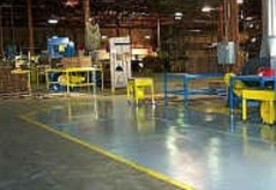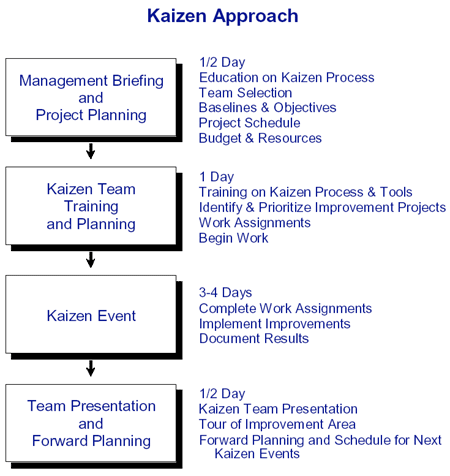Monday, August 15, 2011
Title I WORKING CONDITIONS AND REST PERIODS Chapter I HOURS OF WORK
Art. 82. Coverage. The provisions of this Title shall apply to employees in all establishments and undertakings whether for profit or not, but not to government employees, managerial employees, field personnel, members of the family of the employer who are dependent on him for support, domestic helpers, persons in the personal service of another, and workers who are paid by results as determined by the Secretary of Labor in appropriate regulations.
As used herein, "managerial employees" refer to those whose primary duty consists of the management of the establishment in which they are employed or of a department or subdivision thereof, and to other officers or members of the managerial staff.
"Field personnel" shall refer to non-agricultural employees who regularly perform their duties away from the principal place of business or branch office of the employer and whose actual hours of work in the field cannot be determined with reasonable certainty.
Art. 83. Normal hours of work. The normal hours of work of any employee shall not exceed eight (8) hours a day.
Health personnel in cities and municipalities with a population of at least one million (1,000,000) or in hospitals and clinics with a bed capacity of at least one hundred (100) shall hold regular office hours for eight (8) hours a day, for five (5) days a week, exclusive of time for meals, except where the exigencies of the service require that such personnel work for six (6) days or forty-eight (48) hours, in which case, they shall be entitled to an additional compensation of at least thirty percent (30%) of their regular wage for work on the sixth day. For purposes of this Article, "health personnel" shall include resident physicians, nurses, nutritionists, dietitians, pharmacists, social workers, laboratory technicians, paramedical technicians, psychologists, midwives, attendants and all other hospital or clinic personnel.
SOURCE: http://www.dole.gov.ph/labor_codes.php?id=39
NATIONAL WAGES AND PRODUCTIVITY COMMISSION
SUMMARY OF CURRENT REGIONAL DAILY MINIMUM WAGE RATES
Non-Agriculture, Agriculture
As of July 2011
(In pesos)
SOURCE:
http://www.nwpc.dole.gov.ph/pages/statistics/stat_current_regional.html
TUCP TO FILE 55-PESO WAGE INCREASE IN THE NCR
The Trade Union Congress of the Philippines, the largest labor organization in the country, will file a P55-75 across-the-board wage petition in the National Capital Region next week.
With the continuing increases in deregulated oil prices, automatic adjustments in rates of utilities (electricity, water), and the resulting general increases in prices, among others, workers are clamoring for better wages.
“The pressing need to strengthen economic recovery and improve the living standards of workers should prompt the Regional Wage Board to exercise its wage fixing function,” says TUCP General Secretary and Former Senator Ernesto Herrera.
TUCP’s 55-peso across-the-board petition is based on the actual 4.4% increase in prices between July 2008 and December 2010 which is equivalent to P16.80, the projected 10% rise in CPI all 2011 or P40.40, and P21 or P1.00 per day, for every year since 1989 that there were no increases in real wages. The monetary sum of the actual and projected lost purchasing power of minimum wage earners, less the last P22 wage increase granted in July 2010 is P56.20.
Herrera, former Chair of the Senate Labor and Employment Committee says: “Workers have not raised their living standards for decades; while other sectors have accumulated more and more of the country’s incomes and wealth. Workers have done their share in improving the standards of living in the country, particularly in National Capital Region. Their own standards of living, however, have not risen. This should not continue.”
If approved, minimum wage will effectively become P459 in the National Capital Region.
“We are talking with other labor groups about this proposed petition. Once we reach an agreement, we will file this as a common labor group wage petition”, says Herrera.
The TUCP is also assessing situations in different regions and will file the appropriate wage petitions.
(-end -)
RAFAEL E. MAPALO
Director for Education
Trade Union Congress of the Philippines (TUCP)
TUCP-PGEA Compound, Maharlika cor. Masaya Street
UP Village, Diliman, Quezon City 1101 PHILIPPINES
Tel. (+632) 9220917 Fax (+632) 9219758; (+632) 4332208
Email: tucp.education@gmail.com; secrtucp@tucp.org.ph; rafie_mapalo@yahoo..com
Website: www.tucp.org.ph
With the continuing increases in deregulated oil prices, automatic adjustments in rates of utilities (electricity, water), and the resulting general increases in prices, among others, workers are clamoring for better wages.
“The pressing need to strengthen economic recovery and improve the living standards of workers should prompt the Regional Wage Board to exercise its wage fixing function,” says TUCP General Secretary and Former Senator Ernesto Herrera.
TUCP’s 55-peso across-the-board petition is based on the actual 4.4% increase in prices between July 2008 and December 2010 which is equivalent to P16.80, the projected 10% rise in CPI all 2011 or P40.40, and P21 or P1.00 per day, for every year since 1989 that there were no increases in real wages. The monetary sum of the actual and projected lost purchasing power of minimum wage earners, less the last P22 wage increase granted in July 2010 is P56.20.
Herrera, former Chair of the Senate Labor and Employment Committee says: “Workers have not raised their living standards for decades; while other sectors have accumulated more and more of the country’s incomes and wealth. Workers have done their share in improving the standards of living in the country, particularly in National Capital Region. Their own standards of living, however, have not risen. This should not continue.”
If approved, minimum wage will effectively become P459 in the National Capital Region.
“We are talking with other labor groups about this proposed petition. Once we reach an agreement, we will file this as a common labor group wage petition”, says Herrera.
The TUCP is also assessing situations in different regions and will file the appropriate wage petitions.
(-end -)
RAFAEL E. MAPALO
Director for Education
Trade Union Congress of the Philippines (TUCP)
TUCP-PGEA Compound, Maharlika cor. Masaya Street
UP Village, Diliman, Quezon City 1101 PHILIPPINES
Tel. (+632) 9220917 Fax (+632) 9219758; (+632) 4332208
Email: tucp.education@gmail.com; secrtucp@tucp.org.ph; rafie_mapalo@yahoo..com
Website: www.tucp.org.ph
5S (methodology)
 5S is the name of a workplace organization methodology that uses a list of five Japanese words which are seiri, seiton, seiso, seiketsu and shitsuke. Transliterated or translated into English, they all start with the letter "S". The list describes how items are stored and how the new order is maintained. The decision-making process usually comes from a dialogue about standardization which builds a clear understanding among employees of how work should be done. It also instills ownership of the process in each employee.
5S is the name of a workplace organization methodology that uses a list of five Japanese words which are seiri, seiton, seiso, seiketsu and shitsuke. Transliterated or translated into English, they all start with the letter "S". The list describes how items are stored and how the new order is maintained. The decision-making process usually comes from a dialogue about standardization which builds a clear understanding among employees of how work should be done. It also instills ownership of the process in each employee. There are 5 primary phases of 5S: sorting, straightening, systematic cleaning, standardizing, and sustaining. Additionally, there are two other phases sometimes included, safety & security.
There are 5 primary phases of 5S: sorting, straightening, systematic cleaning, standardizing, and sustaining. Additionally, there are two other phases sometimes included, safety & security.Sorting (Seiri)
Eliminate all unnecessary tools, parts, and instructions. Go through all tools, materials, and so forth in the plant and work area. Keep only essential items and eliminate what is not required, prioritizing things as per requirements and keeping them in easily-accessible places. Everything else is stored or discarded.
Straightening or setting in order / stabilize (Seiton)

There should be a place for everything and everything should be in its place. The place for each item should be clearly labeled or demarcated. Items should be arranged in a manner that promotes efficient work flow. Workers should not have to bend repetitively to access materials. Each tool, part, supply, or piece of equipment should be kept close to where it will be used – in other words, straightening the flow path. Seiton is one of the features that distinguishes 5S from "standardized cleanup". This phase can also be referred to as Simplifying
Sweeping or shining or cleanliness / systematic cleaning (Seiso)

Keep the workplace tidy and organized. At the end of each shift, clean the work area and be sure everything is restored to its place. This makes it easy to know what goes where and ensures that everything is where it belongs. A key point is that maintaining cleanliness should be part of the daily work – not an occasional activity initiated when things get too messy.
 Standardizing (Seiketsu)
Standardizing (Seiketsu)Work practices should be consistent and standardized. All work stations should be identical. All employees should be able to work in any station doing the same job with the same tools that are in the same location in every station. Everyone should know exactly what his or her responsibilities are for adhering to the first 3 S's.
Sustaining the discipline or self-discipline (Shitsuke)
 Maintain and review standards. Once the previous 4 S's have been established, they become the new way to operate. Maintain focus on this new way and do not allow a gradual decline back to the old ways. While thinking about the new way, also be thinking about yet better ways. When an issue arises such as a suggested improvement, a new way of working, a new tool or a new output requirement, review the first 4 S's and make changes as appropriate.
Maintain and review standards. Once the previous 4 S's have been established, they become the new way to operate. Maintain focus on this new way and do not allow a gradual decline back to the old ways. While thinking about the new way, also be thinking about yet better ways. When an issue arises such as a suggested improvement, a new way of working, a new tool or a new output requirement, review the first 4 S's and make changes as appropriate.Safety
 A sixth phase, "Safety", is sometimes added. There is debate over whether including this sixth "S" promotes safety by stating this value explicitly, or if a comprehensive safety program is undermined when it is relegated to a single item in an efficiency-focused business methodology.
A sixth phase, "Safety", is sometimes added. There is debate over whether including this sixth "S" promotes safety by stating this value explicitly, or if a comprehensive safety program is undermined when it is relegated to a single item in an efficiency-focused business methodology.Security
A seventh phase, "Security", can also be added. In order to leverage security as an investment rather than an expense, the seventh "S" identifies and addresses risks to key business categories including fixed assets (PP&E), material, human capital, brand equity, intellectual property, information technology, assets-in-transit and the extended supply chain.
It is important to have continuous education about maintaining standards. When there are changes that affect the 5S program such as new equipment, new products or new work rules, it is essential to make changes in the standards and provide training. Companies embracing 5S often use posters and signs as a way of educating employees and maintaining standards.
http://en.wikipedia.org/wiki/5S_(methodology)
COLLECTIVE BARGAINING Concepts, Process, Strategies and Techniques
COLLECTIVE BARGAINING Concepts, Process, Strategies and Techniques
IN LIFE,
YOU DON’T GET WHAT YOU DESERVE,
YOU GET
WHAT YOU NEGOTIATE
YOU DON’T GET WHAT YOU DESERVE,
YOU GET
WHAT YOU NEGOTIATE
NEGOTIATION REMINDERS
Benjamin Franklin
Leonardo Da Vince
COLLECTIVE BARGAINING IS THE LIFEBLOOD OF TRADE UNIONISM AND IT IS THE MAIN PURPOSE FOR WHICH WORKERS FORM THEIR ORGANIZATIONS.
WHY COLLECTIVE BARGAINING?
BROADLY, COLLECTIVE BARGAINING
Covers the entire range of organized relations between the employers and the unions representing the workers. This range covers (1) the CBA negotiation;
(2) the administration of the CBA; and (3) the interpretation and application of the CBA
THIS CAN BE LIKENED TO THE
THREE (3) DEPARTMENTS OF A
DEMOCRATIC GOVERNMENT –
LEGISLATIVE
for contract negotiation
EXECUTIVE
for administration of the CBA
JUDICIAL
for contract interpretation and application
THREE (3) DEPARTMENTS OF A
DEMOCRATIC GOVERNMENT –
LEGISLATIVE
for contract negotiation
EXECUTIVE
for administration of the CBA
JUDICIAL
for contract interpretation and application
DIFFERENCES IN PERCEPTION AND APPROACHES TO COLLECTIVE BARGAINING
UNION
Transitory
Life of contract
Tentative and subject to ratification
Are geared towards short-term goals
Easier to correct
MANAGEMENT
Permanent
Building blocks, pyramid effect
Final and difficult to back out
from
Towards long-term consideration –productivity, market prospects
Difficult to change
HOW UNIONS BARGAIN
The union structure is totally opposite to that of a business organization in terms of
PROCEDURE IN COLLECTIVE BARGAINING
ROLES AND RESPONSIBILITIES OF TU NEGOTIATORS
10 MOST IMPORTANT QUALITIES OF A SUCCESSFUL NEGOTIATOR
- Know how to prepare and plan
- Know the subject proposals
- Ability to think clearly and rapidly
- Ability to express thoughts
- Know how to listen
- Good judgment
- Integrity
- Ability to persuade people
- Patience
- A decisive mind
KEYS TO PROPER QUESTIONING
RULES FOR ACTIVE LISTENING
PREPARING THE NEGOTIATION CHECKLIST
- When is the negotiation taking place?
Are there things that might affect the deal?
How much time do we have?
Issues that should be avoided?
- How should issues be ranked?
Need or must have
Nice to Haves
Trade-offs
How badly do they need this deal?
What is important to them?
Beliefs, attitudes, styles
Minimum terms you would accept? Your limit?
- What’s your plan of action?
Write your agenda: what to discuss first, second….
TOP NEGOTIATING TECHNIQUES
TYPES OF NEGOTIATORS
CARP
SHARK
DOLPHIN
THE WIN-WIN SYMBOL
“The Win-Win negotiator’s symbol is intended to remind us
that while we would all like to win
at our professional and private lives,
it is impossible for us
to continually do so unless we are willing
to help others win with us.”
-NF-
SOURCE: kilusan-tucp
Decent work
 Decent work sums up the aspirations of people in their working lives. It involves opportunities for work that is productive and delivers a fair income, security in the workplace and social protection for families, better prospects for personal development and social integration, freedom for people to express their concerns, organize and participate in the decisions that affect their lives and equality of opportunity and treatment for all women and men.
Decent work sums up the aspirations of people in their working lives. It involves opportunities for work that is productive and delivers a fair income, security in the workplace and social protection for families, better prospects for personal development and social integration, freedom for people to express their concerns, organize and participate in the decisions that affect their lives and equality of opportunity and treatment for all women and men.Highlights
The ILO Decent Work Agenda
Productive employment and Decent Work are key elements to achieving a fair globalization and the reduction of poverty. The ILO has developed an agenda for the community of work. Putting the Decent Work Agenda into practice is achieved through four strategic pillars: job creation, rights at work, social protection and social dialogue, with gender equality as a crosscutting objective.
http://www.ilo.org/global/topics/decent-work/lang--en/index.htm
Subscribe to:
Posts (Atom)



